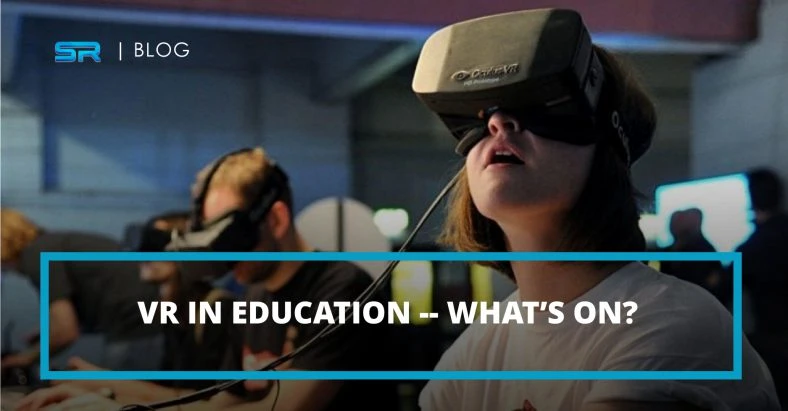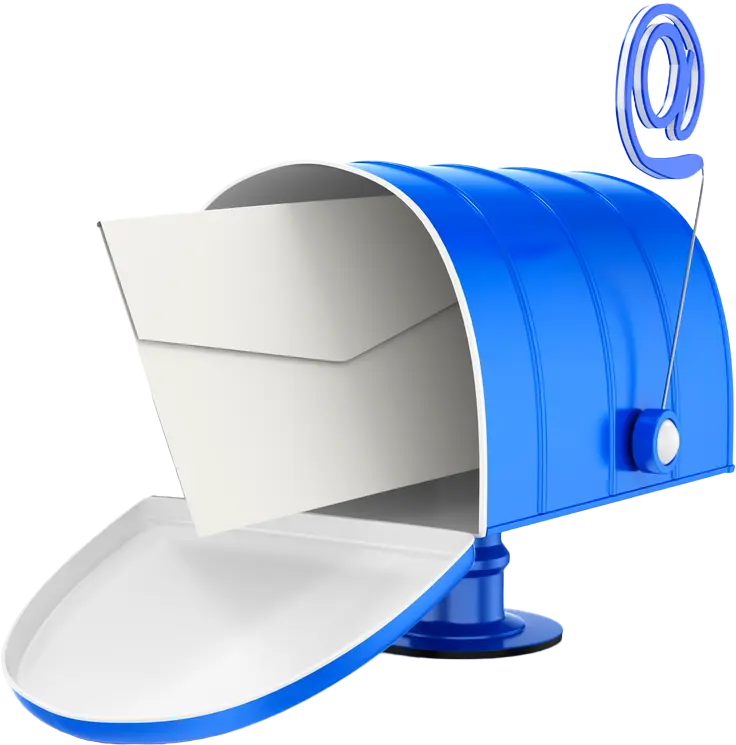VR in Education – What’s On?

Just a couple of years ago, virtual reality technologies were considered to be something from the area of a long-term future: they, as they were, exist, but no one knew exactly where they were used. This specific attitude and reputation arose, first of all, because of the high cost of the technology and equipment for its implementation. But thanks to the gradual improvement of the very tools for implementing VR and the emergence of a variety of software products for its use, it is now mentioned that in these or other areas of manufacturing, in social development, and even in education a virtual reality is used. Now, let's talk more about virtual reality applications in education.
The Benefits of VR
Usage of virtual reality apps for the classroom recovers a lot of new abilities and privileges for studying process in those subjects that are too complicated for an ordinary perception. There are some benefits of virtual reality apps for classroom in general.
- Visual benefits. Three dimensions used for recovering chemistry can explain them without using harmful fluids or dangerous chemical compounds. Virtual reality for the classroom helps the teacher to make the demonstration everything closely to children and allows them to choose any degree of detailing. And it is quite safe for all the members of the lesson even if you are modeling a nuclear explosion or discovering a Big Bang process.
- Involvement in a process - students are not only spectators but the active members of every experiment, and each side can change the rules during the process, make some steps in it in a quest-like mode or even create a game for solving theorems and math tasks.
- Focusing. No doubt, students sometimes can lose focus on the subject of the lesson. Being fully surrounded by circumstances of the problem you are studying in the virtual reality in the classroom you have no distractions at all.
Virtual reality is used in education and makes the studying process more interactive.
How Does It Look Like Just Now
Virtual reality used in the classroom offers extraordinary abilities for the transfer of knowledge. Though the classic style of studying is not distorted, since each session is complemented by a 5-7-minute immersion. A scenario can be used in which a virtual lesson is divided into several scenes, which are included in the right moments. The lecture remains, as before, a structure-forming element of the lesson. This format allows you to modernize the process, to make the members of the lesson immerse fully in the process.
How to implement it in EdTech? Modern developers offer a lot of original and convenient solutions for organizing a virtual reality for a classroom.
- Nearpod is one of the first comers to integrate educational classics into the use of modern digital and commonly-used devices. This is an online platform that allows teachers to create digital material for their classes and shares it with the learners in every moment of studying. You simply send the digital code via e-mail or through social networks to connect your students to the general action. You scroll through the slides, setting the pace of the lesson yourself, involve the children in creative tasks, and track the results in real-time - all with the help of a gadget, which usually only gets in the way. Thanks to virtual reality classroom, teachers can train their skills as well. Nearpod easily interacts with the simplest versions of Google Cardboard helmets, with the result that students can immerse themselves in virtual reality during the lesson using their own gadgets and simple, inexpensive helmets that many educational institutions can afford to buy. The Nearpod VR price is one of the main factors of its popularity in EdTech because virtual reality devices are often expensive, and not every school can allocate money from the budget for virtual reality class equipment
- Google Expeditions - of course, Google, as a developer of virtual reality equipment, could not stay aside. And a convenient and modern education solution for Google Expeditions is one of the best modern products for students and schoolchildren, and it is also very inexpensive. All you need is a tablet, headphones, a Google Cardboard helmet - and students can go on an exciting journey with full immersion around the world. With Google virtual classroom, you can organize the most interesting lessons or lectures on geography, biology, cultural history, and even go into outer space!
- One of the largest developers of solutions for the EdTech cluster is EON Reality. Their products are striking in their diversity - from standard options that are implemented according to a similar scheme with Google or Nearpod, to high-tech virtual reality rooms with the effect of total immersion. EON also offers a new format of learning in the form of MR (mixed reality) products, in which augmented reality is combined with elements of virtual reality and forms an interesting and informative environment of a virtual reality class simulator for exploring new knowledge. According to a company representative, this is exactly the format of education that should be in the 21st century.
Modern technologies allow to fill in the learning process with bright colors. The student simply scans the tutorial page using a smartphone, and instead of a boring black and white image, his screen will display a flat or three-dimensional model and a headset can fully teleport a person to the world, described on the book pages. This way of visualizing information makes learning fun, increases interest in reading, and contributes to understanding and memorizing material.
The Merit of Virtual Reality in Education and Training
The main advantage of the use of virtual reality in education is the maximum involvement of the student in the process, which gives the most effective result, so one lesson in the virtual world successfully replaces dozens of ordinary ones. Experts highlight the undoubted benefits of learning in the virtual world - visibility and security. Due to the maximum degree of detail in VR, it is possible to show evidently what cannot be seen under normal conditions, for example, nuclear fission before a nuclear explosion or the process of awakening a volcano. As for security, then in VR-space, mistakes that cost people's lives in the real world are not terrible. That is why VR technology is actively used to train specialists in the medical, military, and other areas related to risk, allowing you to get the basics of the profession and improve your skills on virtual simulators.
Education In Virtual Reality - Where Is It Implemented
Having in mind the main benefits let's firstly divide the whole audience into the groups of the potential consumers of VR in education.
- The first group where the virtual reality education software can be implemented are, actually, children. From the kinder garden to the college graduates - that's a wide range of possibilities to use it with considerable success.
- Students are the second main group to which the educational virtual reality apps could be applied. Virtual reality class simulator is now used due to the remote studying mode.
- Industry pros or candidates on a vacancy that is connected with the specific work are also the potential targeted audience for VR education.
- Sportsmen, astronauts, army or navy soldiers - they are already using virtual reality in education and training.
If we look closer at each of the options, we can single out exactly how virtual reality is used in education.
Scholarship and VR
Children learn much better at school if there are some special conditions in learning:
- Classes in a game form allow you to not get bored and learn with interest the knowledge that is given by means of virtual reality in the form of a game or video of full presence.
- For children, classes using virtual reality are a real-world of discoveries in which they can see a variety of forms and laws of the universe not from the words of the teacher or from the pictures in the book, but in three-dimensional space, interacting with reality.
All these conditions are included in virtual reality applications in education.
VR for Students - The Way of Experimenting with All the Possible Science Discoveries
In university courses, it's very important to learn how to apply the theory to real-world conditions. But for some of the occupations that are hard to practice in the university labs. Such professions as chemistry, astronomy, medicine, physics, bioengineering, and others require special and sometimes very expansive equipment and bonded with the technologies or experiments that are dangerous for performing by inexperienced students even under the teacher's sight. In those cases, the educational uses of virtual reality technologies are essential.
The same thing is with the pros training - the doctor's internship for example - to find his feet for a newcomer surgeon is easier on the VR app imitating the real surgery operation than practicing on the patients. That's why virtual reality platforms for education and training in the industry are a perspective root of VR development as it is.
The Physical Aspect of The VR Education and Training
VR training complexes are already in great use in military training. Imitating the real conditions of the combat, planning the reconnaissance of the terra, or just working under strategy planning - those are the most obvious ways how to teach apprentices the basic military science things on practice. But not only that is useful. Various training complexes for the pilot or driver training and practicing, VR rooms with the full immersion in the enemy territory area, and fighting skills training simulators are also implemented.
That's not only the military industry that requires training for its pros with VR means. It gains a great curiosity in it from the professional sports trainers for achieving the greatest results from the sportsmen with the help of VR modeling of competitions or sports game. That option helps the athlete to develop his strategical thinking and also to train in the most appropriate conditions without quitting the country or a city for sports gatherings.
Some kinds of industry are hard-conditioned ones so physical and mental training are essential for their technicians. It causes space exploration, petroleum production, geological survey, or emergency service pros. For their qualification training, VR is the most reliable and cheap option.
Distance Education - The Great Perspectives with The VR Implementation
In Western scientific and educational centers, the practice of creating visualization centers (the concept of 3D for everyone and everywhere, development in one center of responsibility) is widespread. This practice implies the creation of one or several visualization centers at an institution of higher education or a scientific organization to which all interested departments have access, while the units themselves develop virtual models of their projects, or order these developments (visualization of their work) to specialists from the visualization center, within cooperation (the concept is similar to the previously existing information and computing centers of research institutes and universities).
That's good news for those who needs or chooses distance education. And it doesn't cause only those who have health restrictions for visiting schools or colleges. You can study at home or just visit the greatest museums or exhibitions with the help of a VR helmet and your PC - that's all!
Some Examples of Education and Training Using VR
If you need some examples of how it works just today, we have some for you.
- Right now the spring camp in Miami Frost Museum of Science is held. Its main topic is Mars Colonization and to explore this theme correctly and appropriately for the children the VR simulator is used for describing how the shuttle launches the surface of the planet.
- In the army training, the future paratroopers are taking part in a simulation of the landing with the parachutes and surviving in the jungle of bog areas.
- The VR simulators for doctors help future anesthesiologists or surgeons to learn how to implement the theory in practice and how to go on with extreme situations while operating.
- Archaeologists use VR to recreate lost architectural masterpieces of antiquity. Scientists from the University of Sydney have joined forces with the company Lithodomos VR to create a mobile application for a virtual walk through the ancient city of Nea Paphos in Crete, which plunges during its heyday in the 150s AD and you can use it right now, downloading from Google Play!
Resuming all these facts, you can see that VR is a powerful tool for reformatting the study process on all the stages from the K-grades to the pro's training for successful work. Usage of virtual reality apps for the classroom is getting more popular. ServReality is proficient at virtual reality education software.
Read more about military virtual reality training in our blog.
Author's bio: John Lang is a member of ServReality team specializing in developing mobile virtual apps on Unity3D. His wide experience he also puts in words to share it with those who are interested in VR industry development.

